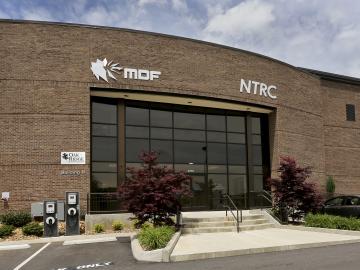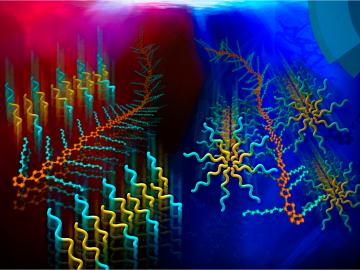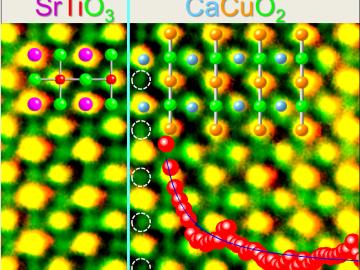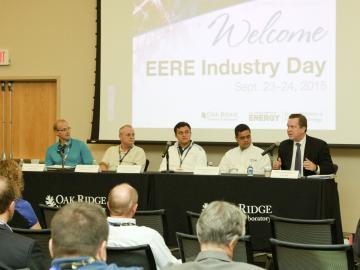Filter News
Area of Research
- (-) Clean Energy (41)
- (-) Fusion Energy (1)
- (-) Materials (39)
- Advanced Manufacturing (3)
- Biological Systems (3)
- Biology and Soft Matter (1)
- Building Technologies (2)
- Chemical and Engineering Materials (2)
- Chemistry and Physics at Interfaces (6)
- Computational Chemistry (1)
- Energy Frontier Research Centers (7)
- Functional Materials for Energy (6)
- Geographic Information Science and Technology (2)
- Isotope Development and Production (1)
- Materials Synthesis from Atoms to Systems (5)
- Materials Under Extremes (6)
- Neutron Data Analysis and Visualization (2)
- Neutron Science (10)
- Nuclear Science and Technology (6)
- Quantum Condensed Matter (2)
- Reactor Technology (1)
- Supercomputing (20)
- Transportation Systems (2)
News Type
Media Contacts

The Department of Energy's Oak Ridge National Laboratory and Strangpresse LLC of Youngstown, Ohio, have signed a non-exclusive licensing agreement on a portfolio of ORNL patents related to large-scale additive manufacturing. ORNL is leading advances in the productio...

Quasiparticles—excitations that behave collectively like particles—are central to energy applications but can be difficult to detect. Recently, however, researchers have seen evidence of quasiparticles called negative trions forming and fading in a layer of semiconducting mate...

Ethanol’s inherently high octane rating makes it attractive for meeting fuel economy and greenhouse gas targets and renewable fuel mandates, according to an Oak Ridge National Laboratory report. Although ethanol has two-thirds the energy density of gasoline, its higher octane ...

Collisions and congestion at intersections and where highways merge could be greatly reduced – even eliminated – with a technology being developed by a team led by Andreas Malikopoulos, deputy director of the Urban Dynamics Institute at Oak Ridge National Laboratory. The approach...





Winners of the inaugural Buildings Crowdsourcing Community Campaign were announced today at the Department of Energy’s Industry Day event at Oak Ridge National Laboratory. ORNL launched the crowdsourcing platform in March 2015 to give innovators an opportunity to present idea...

A research demonstration unveiled today at the Department of Energy’s Oak Ridge National Laboratory combines clean energy technologies into a 3D-printed building and vehicle to showcase a new approach to energy use, storage and consumption. The Additive Manufactur...




